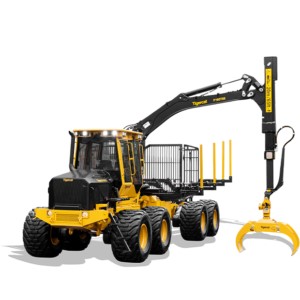
The automation of crane work and teleoperation of driving of a forwarder was modeled and simulated and showed potential cost savings.
Within cut-to-length forwarding, a theoretical semi-autonomous teleoperation concept called tele-extraction, with automation of crane work and teleoperation of driving, was modeled and simulated. Both configurations modeled had greater potential for cost reduction than a previously studied alternative where the driving was automated, and crane work was teleoperated. Teledrive with teleoperated driving empty, driving loaded, and driving between log piles while loading, showed a reduced cost of 10% for five operators on ten forwarders, whereas teledrive with both loading and driving while loading automated showed a reduced cost of 18% at four operators. In both configurations, the lowest cost was reached at about 10% lower productivity compared to standard forwarding. Increased extraction distance had a negative impact on potential for cost reduction since the driving was teleoperated while terminal activities were autonomous.
Teledrive in different variants has the theoretical potential to be up to 18% more cost efficient than standard forwarding; and, as opposed to the previously studied tele-extraction configuration, the potential for teledrive was largest for short extraction distances since that is what results in the highest share of autonomous work during a forwarder load cycle. Sensitivity analyses of changes in operator cost, changes in time consumption for autonomous work, increased payload, and extra waiting times resulted in a variation of the theoretical potential between 3 and 24% cost reductions. The absolute maximum potential cost reduction from automation, so-called Full Auto based on equal time consumption for the same work elements, was 38%, corresponding to removing the operator cost completely.
This information was published in the International Journal of Forest Engineering (2023). The title was “New configurations of the tele-extraction concept” and the researchers were Mikael Lundbäck, Carola Häggström, Dag Fjeld & Tomas Nordfjell. Source